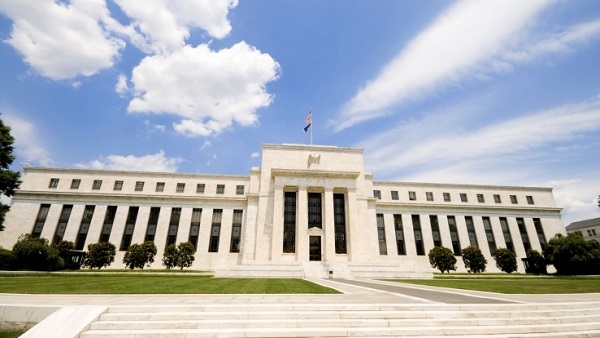
Federal Reserve officials engaged in a detailed debate about inflation while keeping the door open for a September announcement on the timing of balance-sheet reductions, according to minutes from their policy meeting in July.
The minutes showed a majority of Federal Open Market Committee participants sticking with a forecast that inflation would gradually rise to their 2% target over the medium term. However, “many” saw some “likelihood that inflation might remain below 2% for longer than they currently expected,” according to minutes from the July 25-26 Federal Open Market Committee meeting released in Washington on Wednesday. “Several indicated that the risks to the inflation outlook could be tilted to the downside,” the minutes said.
There was also a group of “some other” participants who cautioned that easy financial conditions and tight labor markets could result in an “overshooting” of the inflation target that could be costly to reverse. They “cautioned” against “a delay in gradually removing policy accommodation.”
The minutes didn’t specify when the Fed would begin shrinking its balance sheet this year. “Although several participants were prepared to announce a starting date for the program at the current meeting, most preferred to defer that decision until an upcoming meeting,” the minutes said. The Fed next meets on Sept. 19-20.
A higher inflation rate could lead to higher interest rates, and a gradual increase in interest rates could help yield-starved issuers of long-term care insurance, long-term disability insurance, and life and annuity products that offer purchasers long-term rate or benefits guarantees.
Fed’s Portfolio
The Fed’s portfolio stands at $4.5 trillion in total assets, the legacy of three rounds of quantitative easing as the central bank added additional stimulus with direct bond purchases once its benchmark lending rate was cut to zero in December 2008.
The Fed staff pushed up its assessment of financial stability risks to “elevated” from “notable,” the minutes said. Fed officials discussed stock valuations with “a couple” saying they were supported by “favorable macroeconomic factors.”
U.S. central bankers in June forecast they would raise the benchmark lending rate a third time this year to a range of 1.25% to 1.5%. That step may depend on officials’ evolving forecast for inflation to rise back to their 2% target.
The minutes showed some officials questioning an inflation framework that rested on employment and growth rising above long-term sustainable levels.
“A few participants cited evidence suggesting that this framework was not particularly useful in forecasting inflation,” the minutes said. “Most participants thought that the framework remained valid.”
Price Goal
The Fed has missed its price goal for most of the past five years. The consumer price index rose 1.7% for the 12 months ending July, while the Fed’s preferred measure, which is tied to consumption, rose 1.4% in June.
In June officials lowered their 2017 inflation forecast, and indicated they didn’t expect to hit the 2% target until 2018.
The unemployment rate last month matched a 16-year low of 4.3%, and average hourly earnings rose 2.5% for the year, around the average rate during the recovery which began in June 2009.
A broader measure of labor costs which includes benefits, the employment cost index, has also fallen short of the rates of increase seen before the recession.
The economy continues to expand. Non-farm payrolls rose by 209,000 jobs last month, and gross domestic product expanded 2.6% in the second quarter.
Copyright 2017 Bloomberg. All rights reserved. This material may not be published, broadcast, rewritten, or redistributed.


